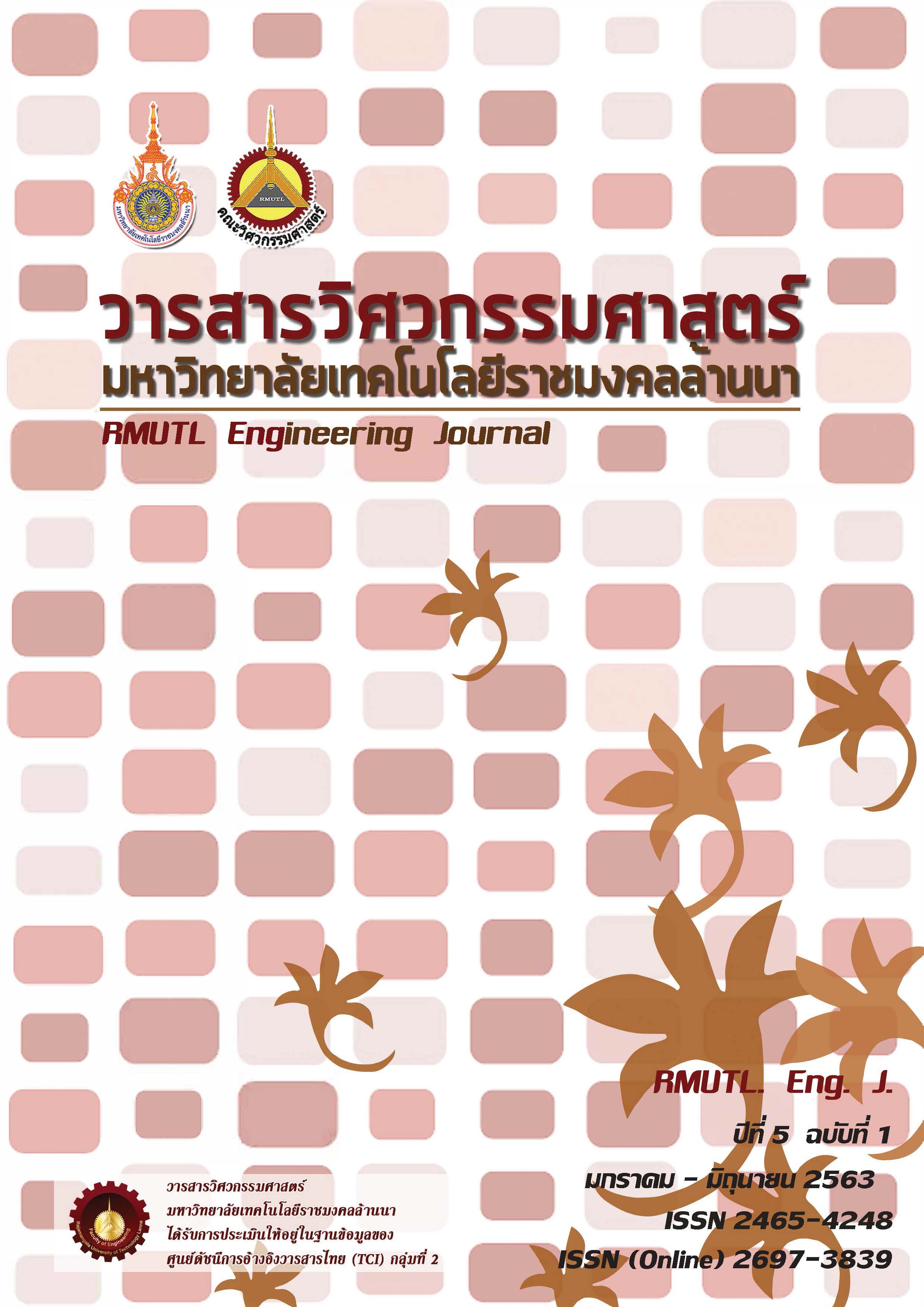Development of Method for Categorization on Sign Language Picture using Image Plane Adjustment Technique
DOI:
https://doi.org/10.14456/rmutlengj.2020.4Keywords:
Classification, Machine Learning, Sign LanguageAbstract
Most image classification is based on applying decision-making algorithms, in conjunction with image preprocessing, in order to extract distinctive features from the images and compute the most appropriate weights used in the decision making. This paper presents a method to classify sign language images by using multiple machine learning methods. The sign language images used in this work are obtained from the American Sign Language (ASL) database, which contains both black and white and color images (RGB). Experiments have shown that the multiple machine learning method is able to correctly classify sign language images with 98.06 percent accuracy.
References
2.United Nations, Multi-country assessment of national capacity to provide hearing care, WHO Report Hearing Care: (NLM classification: WV 270)
3.Demographic Statistics Report Population and Housing, National Statistical Office. Available from: http:// http://statbbi.nso.go.th/
4.Report of the situation of the disabled in Thailand. Available from: http://www.dep.go.th
5.Gałka, Jakub, et al. "Inertial motion sensing glove for sign language gesture acquisition and recognition," IEEE Sensors Journal 16.16 (2016): pp.6310-6316.
6.Javed, Shahrukh. “Wireless Glove for Hand Gesture Acknowledgment: Sign Language to Discourse Change Framework in Territorial Dialect,” ICRA 2018 (2018).
7.Saleh, Neven, et al.“Smart glove-based gestures recognition system for Arabic sign language,” Innovative Trends in Computer Engineering (ITCE), International Conference on (2020).
8.Rokade, Rajeshree S, Dharmpal D. Dye. "Spelled sign word recognition using key frame." IET Image Processing , 9.5 (2014): pp 381-388.
9.Kshirsagar, Ketki P. "Key Frame Selection for One-Two Hand Gesture Recognition with HMM." International Journal of Advanced Computer Research 5.19 (2015): pp. 192.
10.Hosain, Al Amin, et al. "FineHand: Learning Hand Shapes for American Sign Language Recognition." arXiv preprint arXiv:2003.08753 (2020).
11.Tubaiz, Noor, Tamer Shanableh, Khaled Assaleh. "Glove-based continuous Arabic sign language recognition in user- dependent mode." IEEE Transactions on Human-Machine Systems, 45.4 (2015): pp.526-533.
12.Jiang, Shuo, et al. "Stretchable E-Skin Patch for Gesture Recognition on the Back of the Hand." IEEE Transactions on Industrial Electronics (2019).
13.Sanguansat, P. (2019). Artificial Intelligence with Machine Learning, Nonthaburi : IDC Premier.
14.Miroslav Kubat. (2015). An Introduction to Machine Learning. Coral Gables: Springer.
15.Srikaew, A. (2009). Computational intelligence. Teaching documents Department of Electrical Engineering Suranaree University of Technology.
16.Life Print. American Sign Language. Available from:https://www.lifeprint.com/asl101/fingerspelling/fingerspelling.htm/ [Accessed 6th April 2020].










